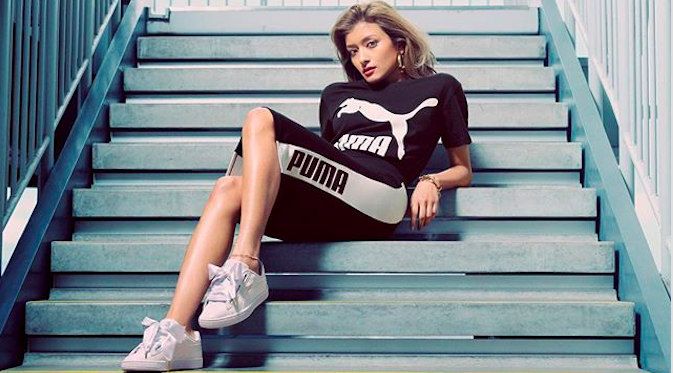Puma reported net earnings almost doubled as the German firm’s collaborations with non-sport celebrities continues to pay dividends.
Puma earlier this month said it earned an operating profit of €70 million ($76 million) in the first three months of this year, up 70 percent from the same period a year earlier. Sales climbed 15 percent on a currency-neutral basis to €1 billion ($1.09 billion).
But on Tuesday, officials gave further details, revealing that – excluding currency movements – the Americas region saw the fastest growth, up 17 percent on a currency-neutral basis. In Europe, the Middle East and Africa they were up 15.9 percent while Asia rose 12.4 percent.
Among categories, footwear was the main growth driver, jumping 24.8 percent on a currency-neutral basis. Apparel gained 9.5 percent and accessories, 3.9 percent.
“Thanks to good sell-through to the end consumer, both in our owned and operated retail and with our key retail partners, our sales in Q1 developed above our expectation,” said Bjørn Gulden, CEO of Puma SE, in a statement. “For the first time in the Puma history, we achieved sales exceeding €1 billion in a quarter.”
He added, “This stronger than expected start of the year further shows that Puma is on the right path.”
As noted with its updated guidance given on April 12, Puma raised its outlook for the full year to low-double-digit growth in revenue and for the full-year EBIT to be between €185 million and €200 million.
Puma is on its fourth year of a turnaround program spearheaded by Gulden, who became CEO in 2013, and the sizeable gains are partly due to easy year-ago comparisons.
On a conference call with journalists, Gulden noted that the company was able to raise prices and overall sold fewer goods at a discount. Stronger-than-expected demand caused Puma to be out of stock on several lines, causing Puma to pull forward orders booked for the second quarter.
“Retailers ordered more because they needed more, which has not been the case for a long time at Puma,” Gulden said on a conference call with journalists. Puma is also making adjustments to its supply chain to adjust for heightened demand.
“We need to make sure we don’t oversell certain lines. We need to control growth in partnership with retailers,” he said. He particularly highlighted strong demand for retro basketball shoes worn by model Cara Delevingne and the “Limitless” sneakers launched by Canadian rapper The Weeknd in February.
“From a consumer point of view we have a great momentum in women’s,” Gulden added in an interview with Bloomberg. “I think we have great product and have done very interesting marketing.”
Gulden also noted that Puma is capitalizing on the emerging trends of streetwear and sportswear with its endorsement deals with non-sports celebrities, which also includes collaborations with the singer Rihanna and reality star Kylie Jenner. The success on the women’s side also reflects strength in the athleisure trend. Said Gulden, “It’s good-looking product that also performs well and has technology. And we at Puma, being a little more edgy, have a great role to play in it.”
The bottom line was largely driven by the top-line growth. The gross profit margin improved slightly by 30 basis points to 47.1 percent. The increase was due to selective price adjustments and further improvements in sourcing.
Operating expenses rose 12.5 percent to €406.8 million ($43.4 million) in the first quarter due to intensified marketing activities, investments in own retail stores and higher sales-related variable costs. As a percent of sales, operating expenses were reduced to 40.5 percent from 42.5 percent.
EBIT jumped 70.1 percent to €70.2 million ($76.7 million). Net earnings improved 92.2 percent to €49.6 million ($54.2 million), or €3.32 a share ($3.63).
For the full year, Puma expects that sales will increase currency-adjusted at a low double-digit percentage rate, up from previous guidance calling for currency-adjusted increase at a high-single-digit percentage rate. The guidance for the gross profit margin remains unchanged (improvement to approximately 46 percent; previous year: 45.7 percent). Operating expenses for the full year 2017 are now expected to increase at a high-single-digit percentage rate (previous guidance: mid- to high-single-digit percentage rate).
Operating result (EBIT) is now anticipated to come in between €185 million and €200 million (previous guidance: between €170 million and €190 million). In line with the previous guidance, management still expects that net earnings will improve significantly in 2017.
Photo courtesy Puma
















